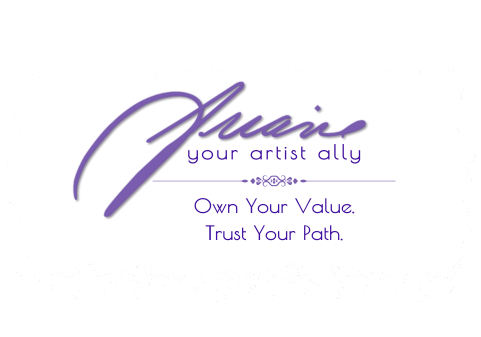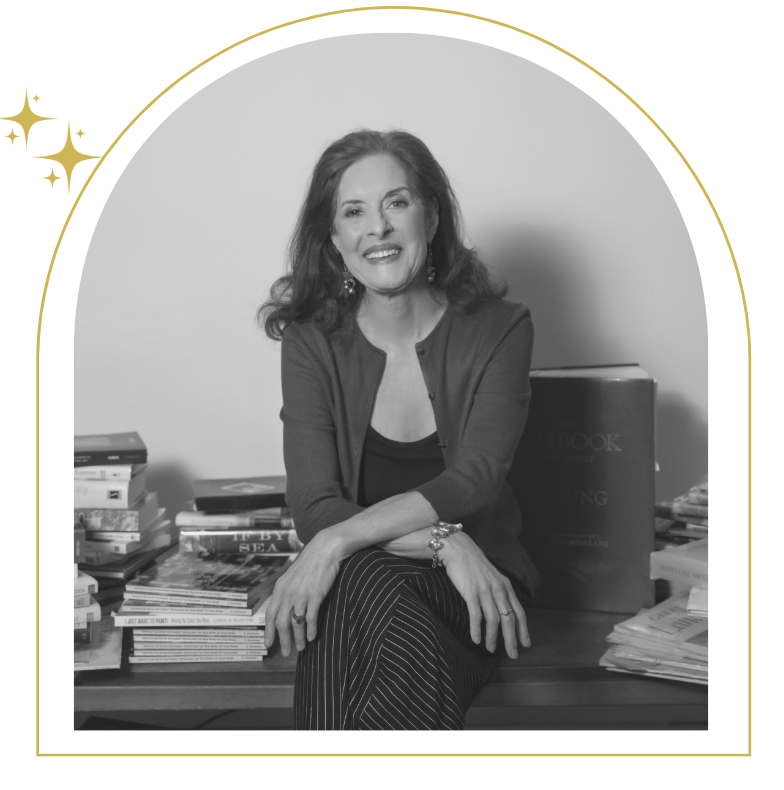Does the artist statement help you in selling your art? Besides vibing on Instagram, your artist statement improves the process for selling your art in 20 other places.
When I stumbled upon artist statements it was 1992. The Internet was barely off breast feeding. Twitter didn’t exist, much less its decadent descendent.
In 2002, when my artist statement book first came out, the art world reserved career for an artist who had died (and were “given” a career retrospective), or a famous, old, alive artist also being “given” a career retrospective.
At that time in our culture, the collective perspective of artists was moving away from the maverick outsider to the more accepted, business person, albeit one with a flair. At that same time, the artist statement was an elusive element in an artist’s portfolio that no one considered overly consequential (including artists), much less worthy of a whole book.

In 2002, all that changed with the first edition of Writing the Artist Statement: Revealing the True Spirit of Your Work, where I uncovered the logical, practical, and reversible flaws in the artist statement resistance movement. You know the one… where artists proclaim with bravado that they have nothing to say that someone can’t already see in the work.
Never mind that this was silly on its face since what the artist sees and what a viewer sees, in spite of any overlap, is essentially a deeply personal “seeing” that arises out of the unique experiences of each individual.
Spin forward into 2007, when I realized that, for artists, the concept of selling your art had zero professional support. So, I created and produced held the first smARTist Telesummit conference for visual artists. Over the next six years, thousands of artists from 16 countries and over 40 US states, attended the first ever, annual, online, 7-day, art-career conference.
At the time, art, artist, and career were culturally clipped by a perceived incompatibility because career was reserved for a certain class made up of doctors, lawyers, educators, etc.
The collective WE had already concluded that Artists were too… flaky, too creative (i.e., not dependable), independent (i.e., not stable), marched to the tune of their own drummer (i.e., not reliable)…starving (by definition)…and certifiably crazy (you know, the Van-Gogh-minus-one-ear syndrome)… you get the vibe.

The sad part back then in 2007?
Artists got the same vibe. And so, as self-fulfilling prophecies always go, artists failed to considered themselves career viable. A business, yes, as artists began wrestling with the idea that they could at least sell their art if they had the right venue, usually galleries or local art fairs.
Now, in 2024, all of this has changed. Search online for “art career coaches,” and they are everywhere. In 2007, there were only a handful of us.
Search online for art career and you’ll come up with a plethora. Back in 2007, all you would find is one or two “art career retrospectives,” or art as a career in other fields: design, education, cartoons, etc.
But now, in 2024, Instagram has turned visual fine art into a financially viable career with coach after coach focused on selling your art to the exclusion of anything else that might, or might not, be part of your viable art career.
Some argue, now, that the artist statement is no longer needed. It’s passé. Some galleries don’t even require it. Well, that’s not new. Some galleries, even before Instagram, resisted and questioned the need for artist statements—a standpoint I logically wrestle to the ground in my book.
Here’s what you need to know: Artist statements deliver a fundamental function that impacts how well you are selling your art, which the current naysayers are thoughtlessly ignoring.
A unique-to-only-you artist statement can never go out of style in the same way your art isn’t going out of style. Fashion… style… trends… these come and go. But the language of your soul remains as authentic and engaging today as it will 500 years from now in 2524.

The trick is to understand how to use your artist statement in any venue.
Let’s take Instagram for starters, and answer this question:

Here’s three:
- It lets you vibe with your social media followers so the word-language of your Original Self becomes as consistent and strong as the visual-language of your art.
- It gives you a signature-language bond between art, artist, and audience that encourages more engagement because it reveals the true spirit of your work.
- Once written, it can be repurposed, expanded or miniaturized, and adapted for multiple channels.
Even on Instagram, it’s a rare artist who throws up an image, but says nothing below it, right?

An artist statement, like your art, establishes who you are in a sea of other artists.
But its usefulness goes even further.
Here’s an excerpt from the “just released” 3rd edition of my book:
Writing the Artist Statement: Revealing the True Spirit of Your Work
WHY WRITE AN ARTIST STATEMENT?
Because an artist statement affirms what you do, and by extension affirms you. And none of us can ever have too much affirmation.
Because an artist statement calls out for you to recognize the true faces of your deepest self: truth, beauty, and goodness.
Because an artist statement invites you to experience another level of awareness about yourself and your art.
Because an artist statement strengthens the relationship you have with your work.
Because an artist statement builds a compelling bridge between your audience and your art.
Because an artist statement enriches the connection between the artist and the art.
Because it is practical. You can use your artist statement for:
|
|
And then, there is my favorite reason for writing an artist statement: Personal Power, which I elaborate on in Chapter 6 of Writing the Artist Statement: Revealing the True Spirit of Your Work.
Here are the two sidebars in that chapter:
Personal power is the power emerging from our deepest connections to life: of feeling, embracing, creating, and celebrating.
The only way to expand our personal power is to embrace ourselves exactly as we are; neither more nor less, but as someone in a state of constantly changing grace.
When you have your own encounter with your own artist statement, then you will come face to face with your personal power…
=========================================
Oh, btw, the brand new 3rd edition of Writing the Artist Statement: Revealing the True Spirit of Your Work is now available along with the 3-Part Ambitious Bundle to help you reach the end of the book with an artist statement in your hand!









